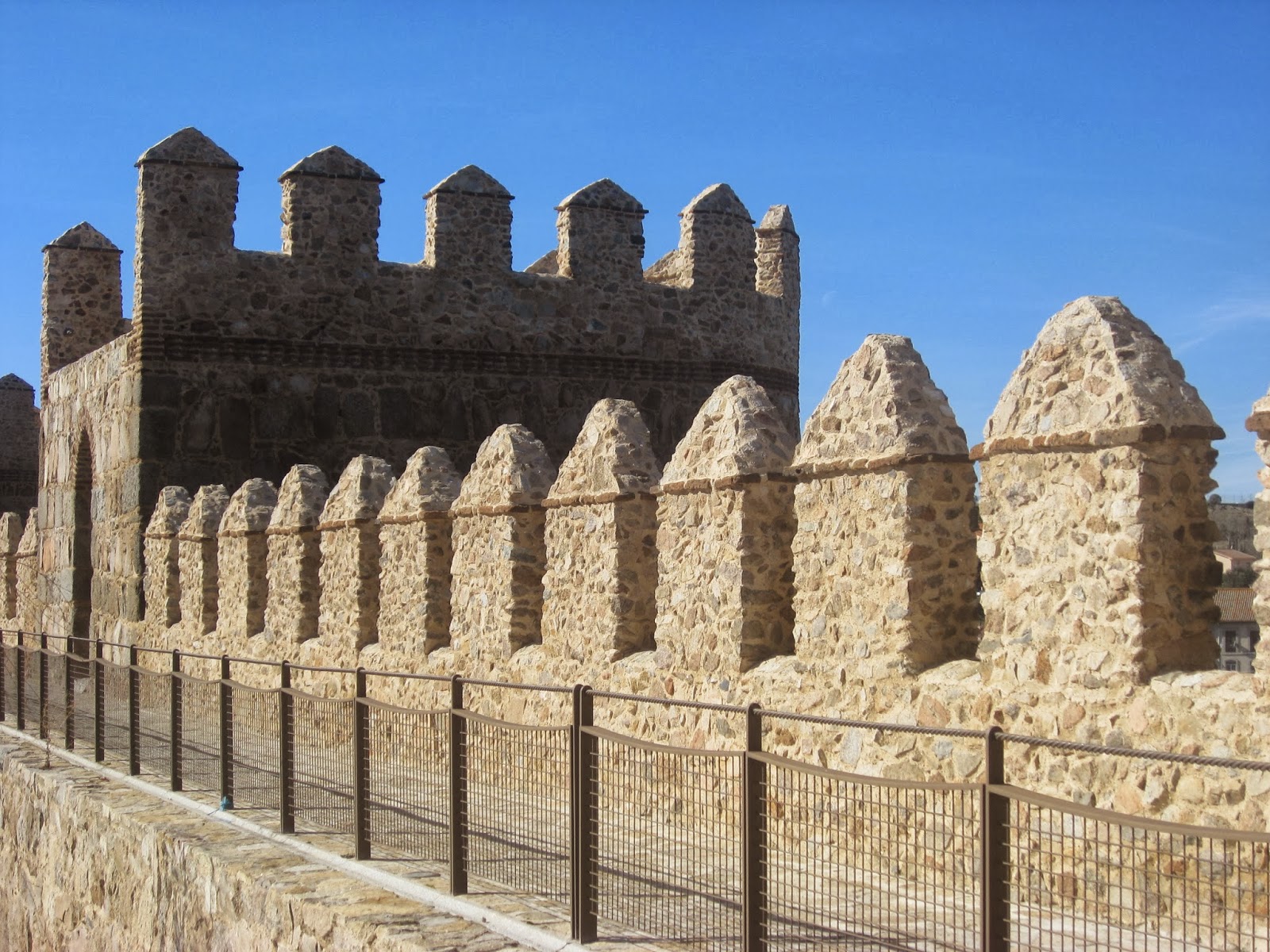In the last post, I covered my weekday schedule and now I can describe my experiences in the city to you. In my first few weeks, I have taken it upon myself to become familiar with the city's main cultural points of interest, and will describe the Plaza Mayor, the new and old cathedrals, the University of Salamanca, the Puente Romano, and—my personal favorite—Convento de San Esteban. Salamanca's buildings are made from sandstone and they take on different colors as the sun sets—giving Salamanca the title "La Dorada" or the Golden City—thus I have decided to call this post "La Dorada," the cultural counterpart to my other cut-and-dry post, "Mi casa y mi horario."
Plaza Mayor—corazón de la ciudad
 |
City hall and the clock. When I took this picture, the
temperature was in the mid 60s—a rarity in
typical Salamanca winters. |
General meeting point for people in Salamanca. The plaza was built in 1755 and originally was used for bullfighting. People will meet under the clock tower and go grab tapas or walk around town. I often meet other students here, including people from Salamanca. Through the university, I can participate in "intercambios," where I meet with native Spanish speakers and we spend half the time speaking English and the other half speaking Spanish. So far, I have met José—a 25 year old studying at the university, María—another student, and María Jesus and Alejandro—a mother and son. I have learned a lot of useful colloquial phrases from all of them. We also check out some of the local hotspots including this shop called "Sweet," which is basically the Sweet Factory except it also has an olive bar in the back...not sure how many people choose this as their go-to olive place.
Catedrales
 |
| On top of the Catedral Vieja. |
During our cultural tour of Salamanca, I visited the Old Cathedral (
Catedral Vieja de Santa María) built in the 14th century employing a Gothic Style. Though the tour was truncated, we were able to make our way into the bell tower and onto the roof of the building. With sunny skies, we had a great view of the city.
Universidad de Salamanca
 |
Facade of the University of Salamanca
(the building where I have half my classes
is to the left of the frame). |
The university was founded in the 12th century. The oldest university in Spain and the third oldest in Europe still operating today, the university was recognized by Pope Alexander IV in the 13th century. It was here that Columbus lobbied to geographers about the importance about charting a course for the Indies. Here, also, academics discussed the rights of indigenous people in America and even actively participated in the Council of Trent—one of the most important councils of the Catholic Church.
Fun fact: UC Berkeley gave a Redwood to the university as a gift. The tree still stands in a university patio (you can find the picture to my slideshow).
The building that I have classes in is right next to the facade of the university—where students now look for a frog carved in amongst tributes to Ferdinand and Isabella in hopes of receiving good luck in their studies.
 |
| Patio de Escuelas |
In my free time before class in the morning, I like to spend a few moments in the university patio (
Patio de Escuelas) and admire the symmetry of the arches. If I sit at a certain angle (blocking out the cell tower nearby from view), I feel like I'm in a completely different era. The walk from my host's apartment to the university takes about 30 minutes, a walk I now enjoy because it forces some exercise into my day.
Puente Romano
 |
| Toro de Salamanca. |
 |
This is a look at the Puente Romano, facing
away from the city center. |
This forms part of the 'Plata' (silver) Roman road linking Astorga and Merida. Many believe the bridge was built in first century A.D. This was the first Roman monument I saw in Spain, and I still cannot quite process the age of the bridge and how easy it is for me to access on a day-to-day basis. After thinking about how old the bridge was, I saw the "toro de Salamanca," a bull sculpted out of stone—a piece of
prehistoric art. Apparently the bull lost its head after being dropped into the Rio Tormes. The Romans used these prehistoric pieces of stone as materials for their structures as stone is fairly hard to come across in these parts. Though headless, the toro still carries with it a fascinating history. Many people from the city cross the bridge on their daily walks or jogs and on the return trip they can see the old cathedral and much of the university.
Convento de San Esteban
 |
This is a picture of the convent from Wikipedia...much better
than the few I took in the rain. |
 |
Me in the cloister. At this point, no one else was visiting
the inside of the convent. |
On a saturday, I decided to make a solo day trip to the Convento de San Esteban. For only a couple euros, I made my way through the 16th century halls that replaced the original 13th century Dominican monastery (according to tradition, Christopher Columbus stayed in the earlier building). The facade of the church depicts the martyrdom of St. Stephen and contains the work of various architects. The church contains Gothic and Renaissance influences and, inside, there is a main reredos covered with gold and intricately decorated. The cloister ("Claustro de los reyes,"my favorite), contains arches in a Renaissance/Gothic style and contains a shrine in the middle. The sacristy, build in the 17th century, has walls in classical style. Since no one was inside, I decided to test the echo a little bit and the acoustics were awesome...in hindsight this was probably a bit inappropriate.





















